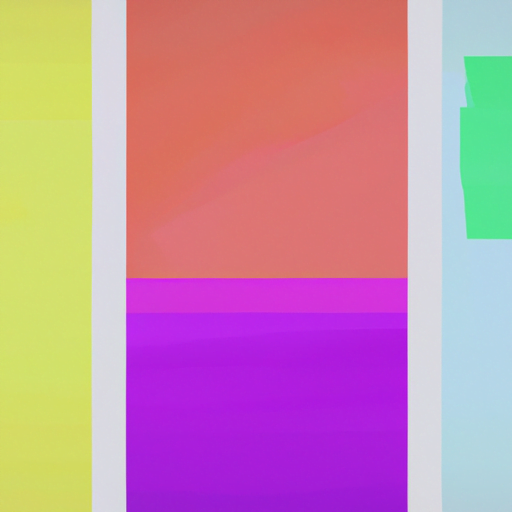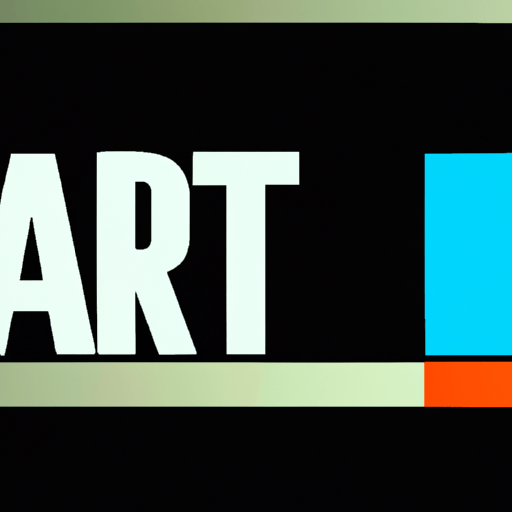
-
Table of Contents
- The Art of Environmental Graphics: Transforming Spaces with Design
- The Power of Environmental Graphics
- Case Studies: Successful Environmental Graphic Design
- 1. The High Line, New York City
- 2. Googleplex, Mountain View
- 3. The Museum of Modern Art (MoMA), New York City
- The Role of Sustainability in Environmental Graphics
- The Future of Environmental Graphics
- Key Takeaways
- Conclusion
The Art of Environmental Graphics: Transforming Spaces with Design

Environmental graphics, also known as experiential graphics or spatial graphics, refer to the use of design elements to transform and enhance physical spaces. From signage and wayfinding systems to large-scale murals and installations, environmental graphics play a crucial role in shaping our experiences within built environments. This article explores the art of environmental graphics, its impact on spaces, and the importance of thoughtful design in creating engaging and memorable experiences.
The Power of Environmental Graphics
Environmental graphics have the power to transform ordinary spaces into extraordinary experiences. By combining visual elements, typography, color, and materials, designers can create immersive environments that evoke emotions, communicate messages, and enhance the overall user experience. Whether it’s a retail store, office building, museum, or public space, environmental graphics can shape our perception of a place and influence our behavior within it.
One of the key functions of environmental graphics is wayfinding. Effective wayfinding systems help people navigate complex environments with ease, reducing confusion and improving overall user satisfaction. Clear signage, intuitive maps, and strategically placed directional cues can guide visitors through unfamiliar spaces, ensuring they reach their destinations efficiently. For example, the iconic London Underground map is a prime example of how environmental graphics can simplify complex information and make it easily understandable.
Case Studies: Successful Environmental Graphic Design
Several notable examples demonstrate the power of environmental graphics in transforming spaces and creating memorable experiences. Let’s explore a few case studies:
1. The High Line, New York City
The High Line, an elevated park built on a historic freight rail line in Manhattan, showcases the potential of environmental graphics in urban spaces. The park’s signage and wayfinding system seamlessly blend with the park’s industrial aesthetic, using materials such as weathered steel and typography inspired by vintage train station signs. The graphics not only provide essential information but also contribute to the overall atmosphere and identity of the park.
2. Googleplex, Mountain View
Google’s headquarters, known as the Googleplex, is renowned for its innovative and playful environmental graphics. From colorful wall murals to interactive installations, the graphics reflect Google’s brand identity and create a stimulating work environment. For example, the Android sculpture garden features giant statues representing different versions of the Android operating system, adding a touch of whimsy to the campus.
3. The Museum of Modern Art (MoMA), New York City
MoMA’s environmental graphics play a crucial role in enhancing the visitor experience and guiding them through the museum’s vast collection. The typography, color palette, and layout of the signage and wayfinding system align with the museum’s modern and minimalist aesthetic. The graphics not only provide essential information but also contribute to the overall visual harmony of the space.
The Role of Sustainability in Environmental Graphics
As the world becomes increasingly conscious of environmental issues, sustainability has become a crucial consideration in environmental graphic design. Designers are now incorporating sustainable materials, energy-efficient lighting, and eco-friendly production processes into their projects. By doing so, they not only create visually appealing graphics but also minimize their impact on the environment.
For example, the use of recycled materials in signage and installations reduces waste and promotes a circular economy. LED lighting systems consume less energy and have a longer lifespan compared to traditional lighting methods, making them a sustainable choice for illuminating graphics. Additionally, the use of digital displays and interactive technologies allows for dynamic content updates, reducing the need for physical replacements and minimizing waste.
The Future of Environmental Graphics
As technology continues to advance, the future of environmental graphics holds exciting possibilities. Augmented reality (AR) and virtual reality (VR) are already being integrated into environmental graphic design, offering immersive and interactive experiences. AR can overlay digital information onto physical spaces, providing real-time directions or additional context. VR can transport users to virtual environments, allowing them to explore and interact with graphics in entirely new ways.
Furthermore, the integration of data-driven design and artificial intelligence (AI) can enhance the effectiveness of environmental graphics. By analyzing user behavior and preferences, designers can create personalized experiences that cater to individual needs. For example, a retail store could use AI to display targeted advertisements or provide personalized recommendations based on a customer’s previous purchases.
Key Takeaways
- Environmental graphics have the power to transform spaces and enhance user experiences.
- Wayfinding systems are a crucial aspect of environmental graphics, helping people navigate complex environments.
- Successful case studies, such as The High Line, Googleplex, and MoMA, demonstrate the impact of thoughtful design.
- Sustainability is an important consideration in environmental graphic design, with designers incorporating eco-friendly materials and technologies.
- The future of environmental graphics lies in the integration of AR, VR, data-driven design, and AI.
Conclusion
Environmental graphics have the power to transform spaces, evoke emotions, and enhance user experiences. From wayfinding systems to immersive installations, thoughtful design can create engaging and memorable environments. As sustainability and technology continue to shape the field, environmental graphic design will evolve to offer even more innovative and personalized experiences. By understanding the art of environmental graphics, we can appreciate the impact of design on our physical surroundings and the role it plays in shaping our interactions with the built environment.
